
5 minute read
Halo-Halo from the Philippines
Take your man to Manila and Puerto Princesa for a vacay fit for a queen.
STORY AND PHOTOS BY
Advertisement
MIKE FALLON
In late February of this year my travel marathon came to a halt that was as abrupt as an airplane landing in Tegucigalpa, Honduras, where the runway is often tagged as the most dangerous in the world with a difficult approach that creates a cringe worthy landing situation that involves quick maneuvers and even faster braking. During the months leading up to America’s (and the global) lockdown, I was able to check a few destinations off my bucket, but my most memorable was a ten-day journey across the Philippines – complete with some disruption from an historic eruption.
Our first landing spot was the capital city of Manila: a hectic, complex Asian megalopolis with all the sights, sounds and smells you would imagine. The journey from the airport to our Airbnb apartment was only nine miles, but took around an hour due to painfully thick traffic. As a tradition, our first day of vacation included a not-so-hectic agenda that allowed us to acclimate to our surroundings, and, in our opinion, the best way to do acclimate includes lots of food and alcoholic beverages! Manila is home to myriad of Pilipino restaurants, but like every good tourist, our first dinner was from the ubiquitous Jollibee fast food restaurant, where $2-$3 US will feed you like a queen. Just ignore your childhood dining rules and order fried chicken, a cheeseburger, and some spaghetti! Yes, all of the above is on the menu and Jollibee. After dinner we ventured to a massive entertainment bar called One 690, and that’s when our low-key evening turned into an energetic experience complete with impressive musical acts, high-quality drag queen performances, and scantily clad dancers who performed into the wee hours of the morning. Cut to Jollibee visit number two… Oops!
As a history buff , my next stop was at the impressive Spanish-era district of Intramuros, which translates to “within walls” and is home to numerous colonial buildings and the massive sixteenth century Fort Santiago that overlooks the Pasig River and modern-day Manila skyscrapers. A stroll around the narrow streets isn’t complete without ice cream or halo-halo, a delicious mixed fruit dessert. Both are easy to fi nd from a number of street vendors. As we exited Intramuros we began to question a haze in the air and a sandy feeling in our hair, but we wouldn’t know why for a few more hours.
Performance Interrupted
A trip to Asia isn’t complete unless you belt out a few songs at a karaoke club (also known as a KTV in this part of the world), so we rented a personal room for our group and began to enjoy snacks, drinks and sang few of our favorites until our fun-
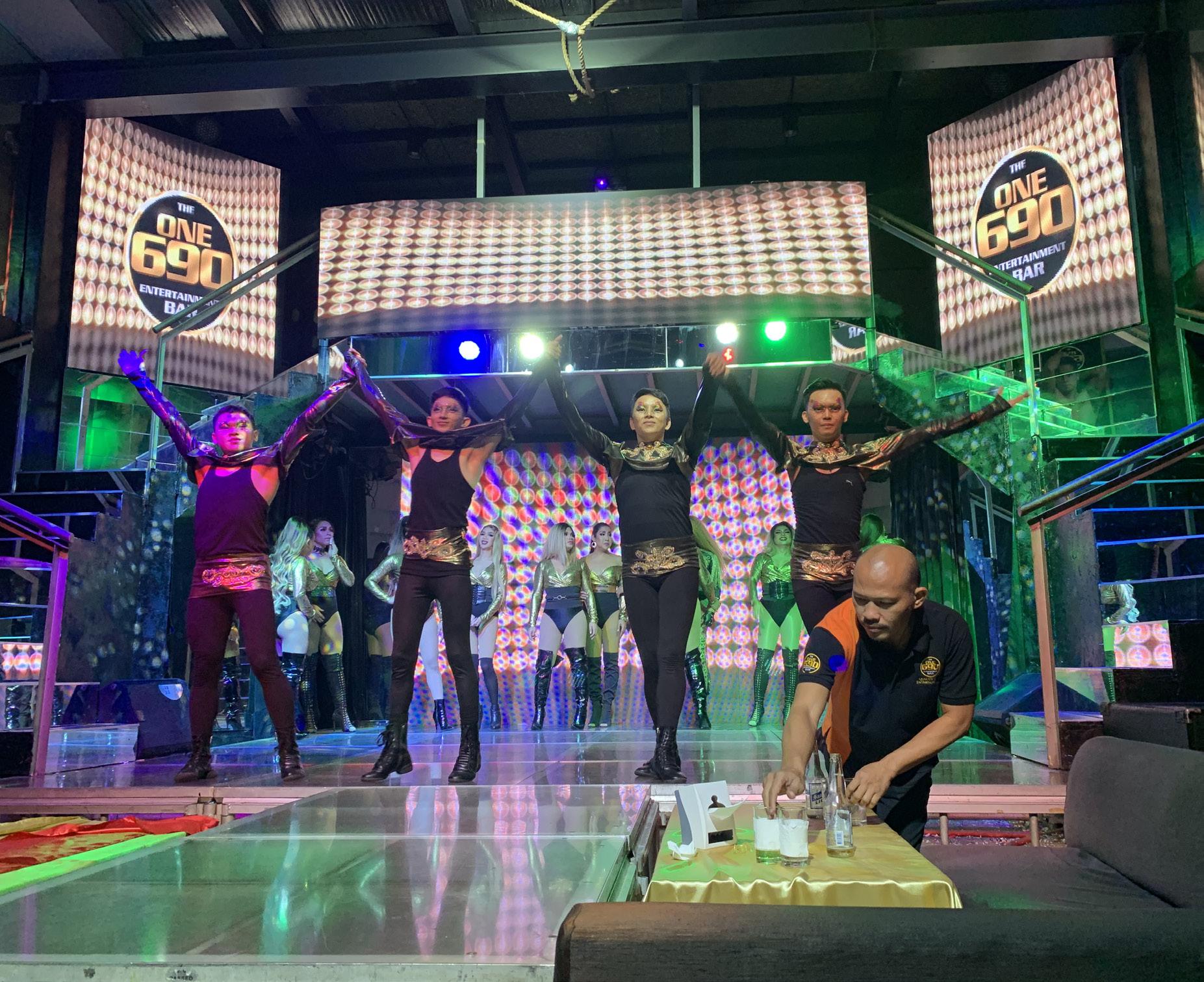

fi lled night came to a sudden halt. During the middle of “hit me baby one more time” the local volcano, Taal, decided to erupt causing what felt like a semi-truck hitting the twenty-story building where we sang the night away. Jolted and confused, within minutes emergency alerts on our phones began sending instructions for sheltering and staying indoors to avoid breathing the volcanic ash. The night turned eerie as the metro area population of almost 12 million people began a frantic hunt for face masks and supplies.
Because of Taal’s ongoing eruption and tremors, we had to stay indoors on our fi nal day in Manila. So, what is there to do indoors in one of the largest cities in Asia? Shopping! Manila is home to some of the largest shopping malls in the world including the SM Mega Mall at a whopping 3.6 million square feet. At SM Mega Mall you’ll fi nd everything from clothing to electronics and at every price range and long with numerous fi ne dining restaurants as well as budget-friendly food court options. If haggling for handicrafts and knock-off s are your style,
Performers at a typical mega-club in Manila
Volcanic ash from local volcano, Taal
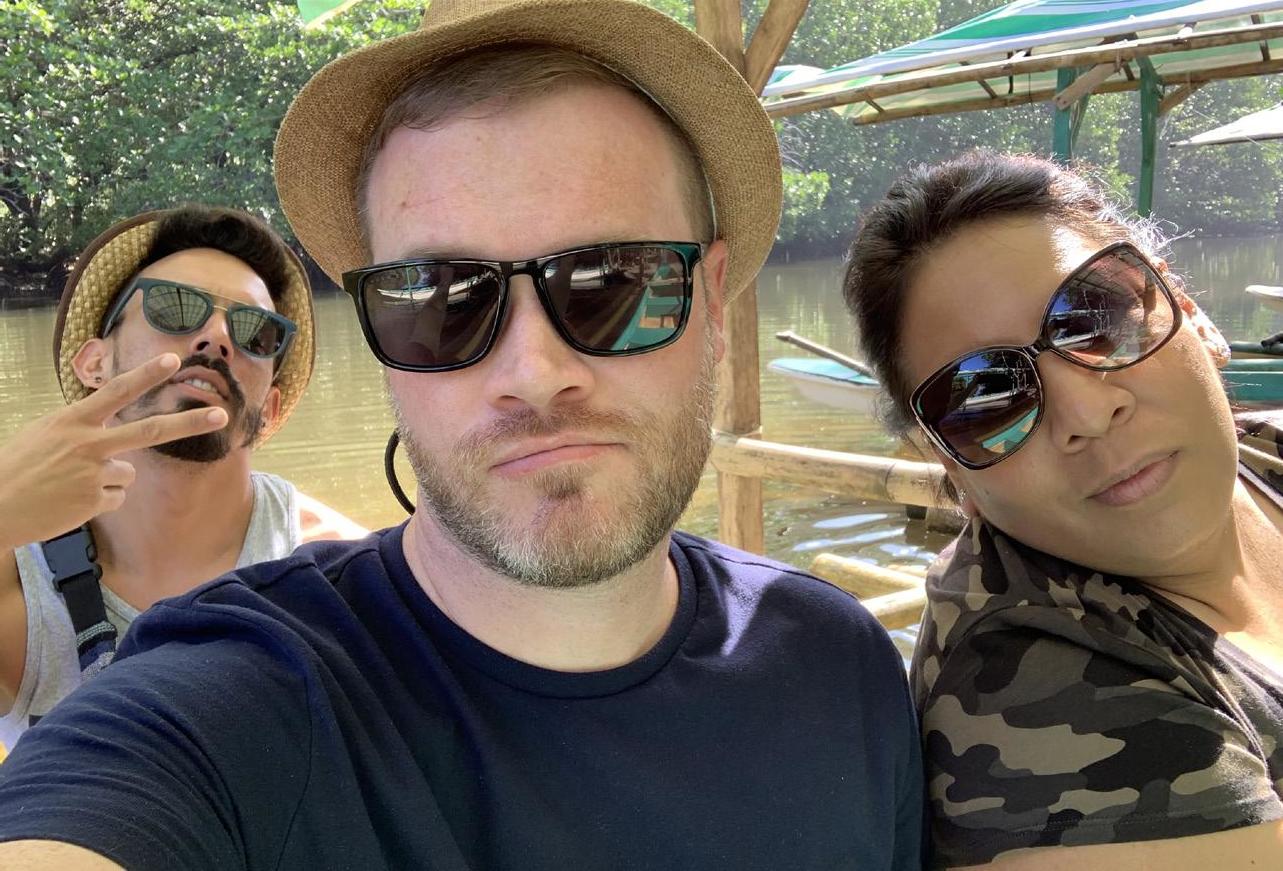
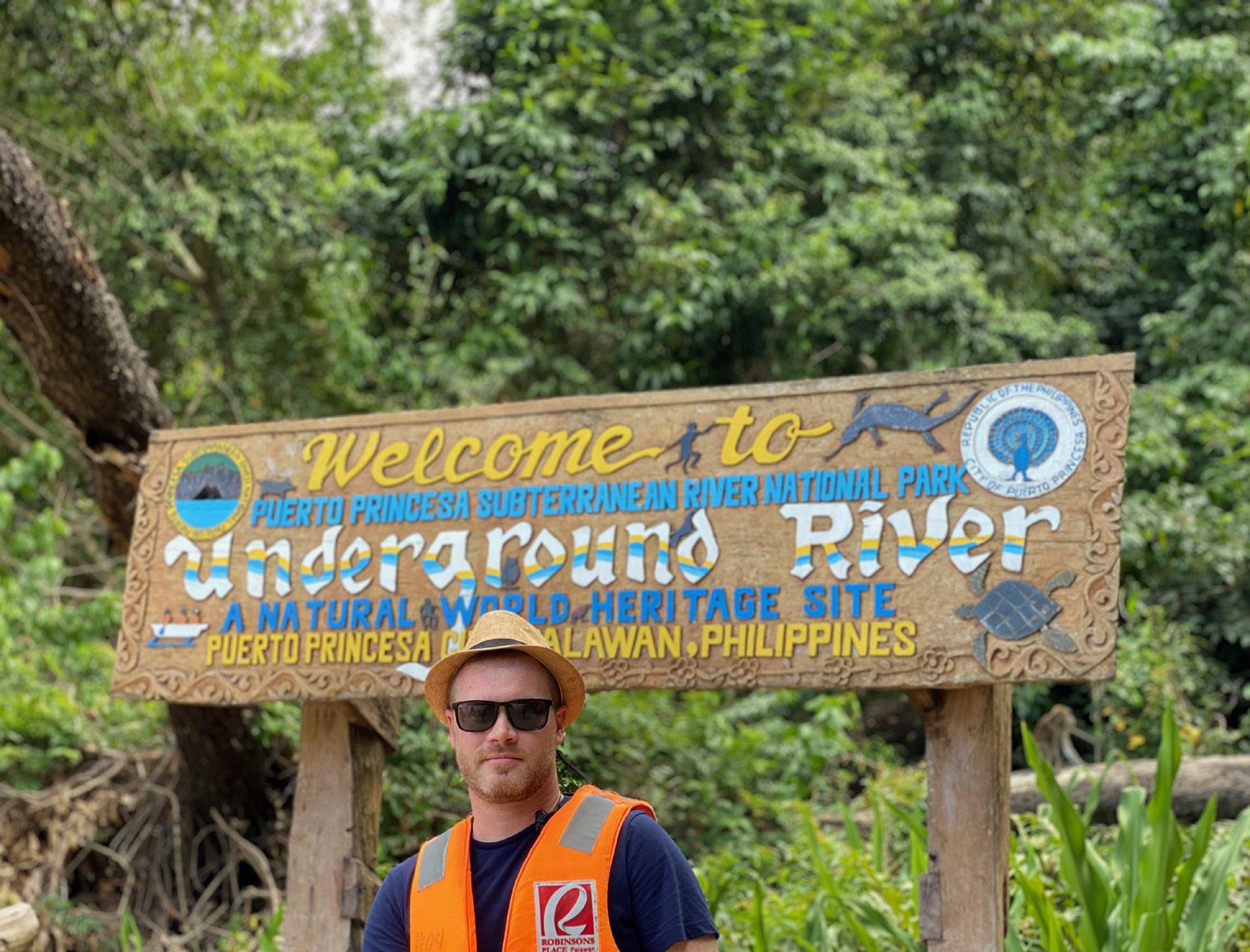
Mike Fallon at Puerto Princesa Subterranean River National Park, island of Palawan, Philippines
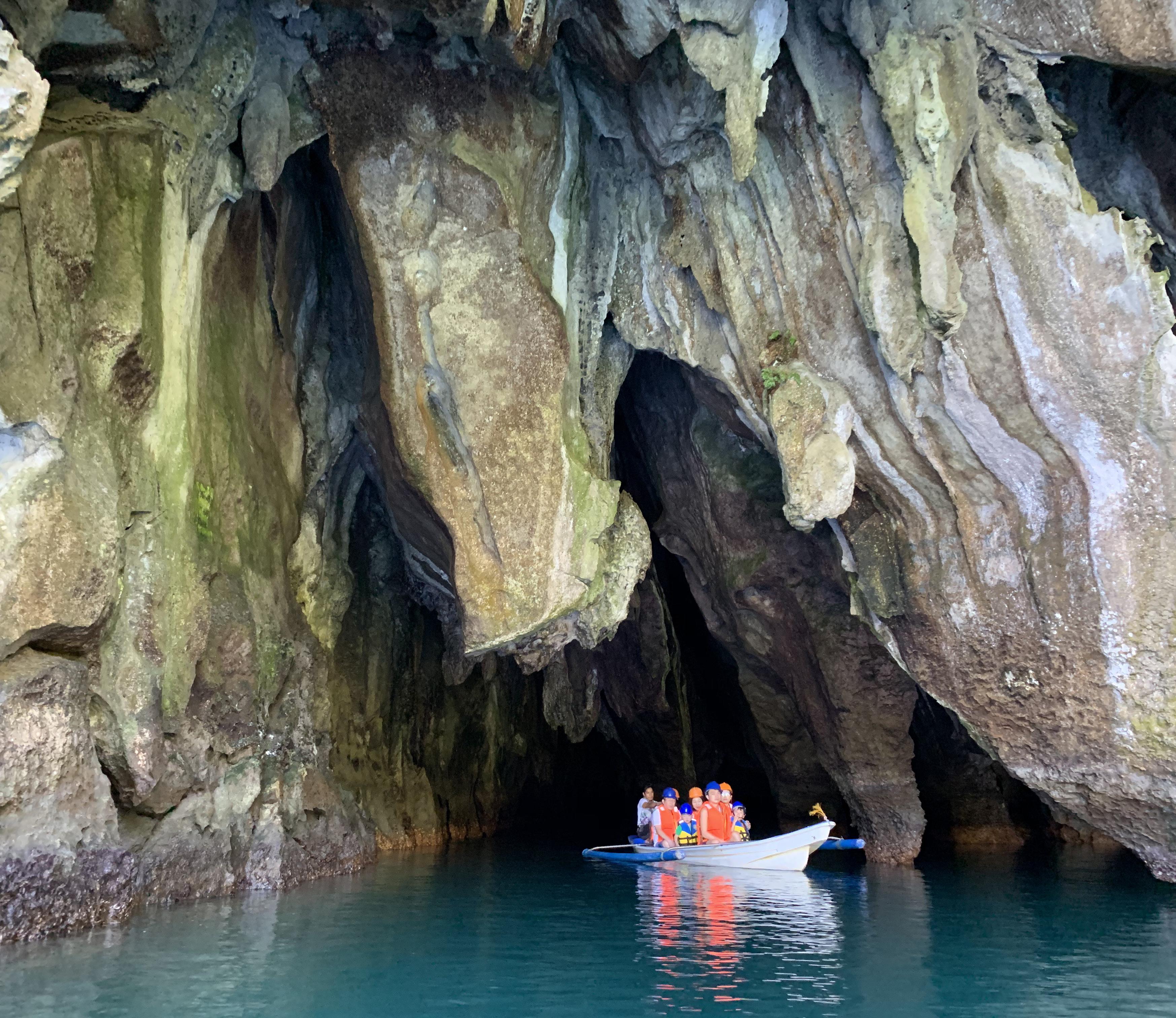
Mike Fallon, front, and friends Jesus SerraPerez and Michelle Mechan, on boat to Underground River.
head over to Greenhills mall with a few pesos and you can leave with some hand-made carvings or maybe a “Bucci bag.”
After a short fl ight out the hustle and bustle of Manila, we landed in the city of Puerto Princesa on the world-famous island of Palawan. Not only is Puerto Princesa touted as the cleanest and greenest city in the Philippines, it is the home to the one of world’s longest subterranean rivers, which is one of the Seven Natural Wonders of the World. The Puerto Princesa subterranean river is located where a karst limestone mountain landscape meets an opening to an underground segment of Cabayugan River. The river winds through the cavern system before fl owing into the West Philippine Sea and is accessible by a small boat. Not for the claustrophobic, the boat tour lasts about 45 minutes with only hand held fl ashlights illuminating the impressive stalactites and stalagmites, bat colonies, and the impressive 1,180 ft. long Italian’s Chamber, one of the largest cave rooms in the world. After a day at the Subterranean River
Exit from Underground River, Puerto Princesa, island of Palawan, Philippines

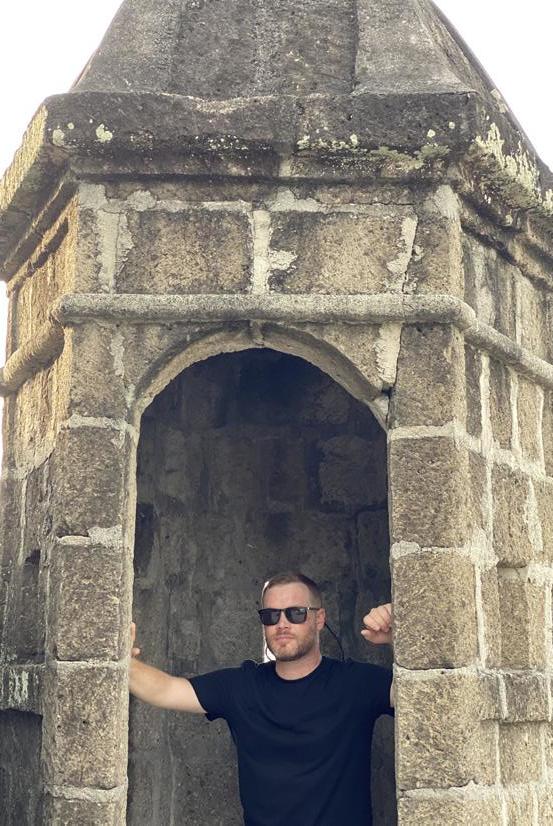
Mike Fallon observing from tower at Fort Santiago
National Park, you can spend days traveling the island of Palawan to visit some of the world’s best beaches such as El Nido, Duli, and Secret Lagoon Beach.
As I reminisce about one of my favorite travel experiences, I can’t avoid wondering how countless tour guides, restaurant servers, taxi drivers, hotel staff , and shopkeepers are handling the current pandemic along with the lack of tourism dollars they are so very dependent on. I truly hope that as soon as we are able to safely travel the world that my stories will inspire you to take a journey, share experience with family and friends, and happily support the hundreds of thousands of people around the world who work in the travel and tourism industries.
— MICHAEL FALLON is a business professor at Beacon College in Leesburg, Fla., and an avid traveler. He spends about three months per year traveling the world, and has visited all Seven Wonders of the World. He’s been to nearly 80 countries, and around 60 UNESCO World Heritage Sites.










